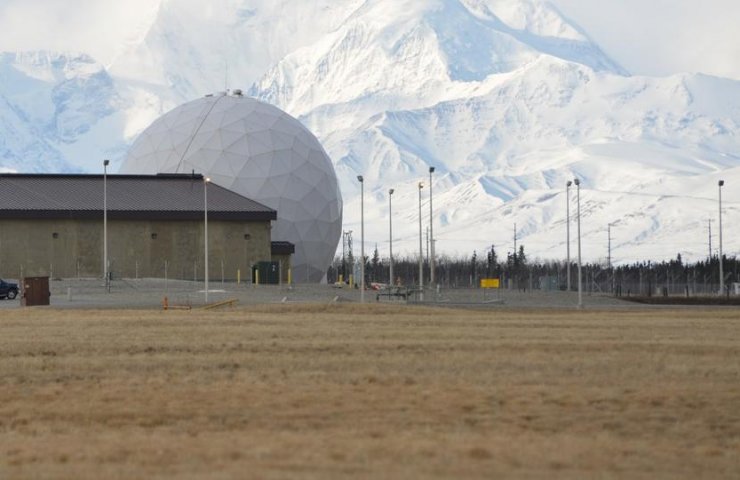Becoming more and more obvious that space is a key area to US security and international security, and the trump has made it a priority in recent years. June 17, the U.S. Department of defense (DOD) published a summary of its Defense space strategy (DSS). The document sets out the strategy for the development of US military power over the next 10 years.
Some experts criticized the strategy, arguing that there are not enough details and coordination, particularly compared with the Obama administration in 2011.
Space strategy national security issued jointly by the Ministry of defence and the office of the Director of national intelligence. Although some of these criticisms are fair, in General, DSS provides guidance, which DOD must plan and structure their forces to counter the growing threat to U.S. and allied systems of countries such as Russia and China.
the biggest problems faced by the strategy are mainly political. Although they rightly recommend that the United States extend space cooperation with allies, these statements are directly at odds with the negative rhetoric of the President of trump and actions against key US allies. Moreover, terms such as "space superiority" are politically problematic. Russia and China will use them to falsely claim that the United States was responsible for "arming" of space, although these countries are actively developing and implementing anti-satellite weapons.
DSS identified three overarching goals to direct the space planning of the DOD over the next decade:
the-
the
- "Conservation of space superiority: the DOD will establish, support and maintain the freedom of action of States in the space sector. The Ministry of defense is ready to protect and defend the United States and, in accordance with the instructions of the allied, partner and commercial space capabilities, and to deter and defeat hostile use of space by the enemy." the
- "to Provide space support of national, joint and combined operations: space forces DOD will provide advanced space capabilities and effects to the implementation of national, joint and combined operations in any area thanks to a robust, comprehensive space to military advantage. The Ministry of defence will use and maintain a thriving domestic civil and commercial space industry". the
- "Ensuring stability in space: in cooperation with allies and partners, DOD will maintain a permanent presence in space to deter aggression in space; to ensure safe transit of the space and in space; to adhere to internationally recognized standards of responsible behavior as a good Manager of the space; and to maintain U.S. leadership in space traffic management and long-term sustainability of outer space activities".
To achieve these goals, DSS sets out broad directions:
the-
the
- "the Establishment of a comprehensive military advantage in space; the
- Integration of military space power in a national, joint and combined operations; the
- Shaping the strategic environment; and the
- Collaborate with allies, partners, industry and other government departments and agencies of the United States".
Each of the activities requires the defense Department to undertake concrete actions to ensure the implementation of the strategy:
the -
"the creation of the space forces of the United States";
the -
"Improving the mental and command and control capabilities";
the -
providing the opportunity space command of the United States it is better to perform a space operation across the spectrum;
the -
"Informing international and public audience about the growing threats in space";
the -
"the Promotion of standards and norms of behavior conducive to US interests, allies and partners";
the -
"Join allies and partners in space politics";
the -
"using technological and commercial achievements, and processes of acquisition".
Critics say, among other things, that DSS can not adequately connect the "goals and means" and not enough of the necessary details of previous documents on space policy. But as a representative of the DOD nI said: "most of the strategies dealt with by the Ministry of defense, are confidential, and we make them unclassified summary. What has been made public, is the unclassified summary, which does not contain all the details".
in addition, as in the case with similar documents of the defense strategy, DOD often provides more detailed guidance on implementation as required.
In General, it is believed that the strategy provides DOD with the necessary high-level guidance to achieve the stated objectives, although a little strange that the DOD was expecting to release a strategy until the last months of the first term of the administration of the trump. However, DSS also faces serious problems.
the Main problems faced by DSS, are of a political nature. The strategy suffers from the same major drawback as the previous documents on the defence strategy of the administration trump: the document prepared by the institution of national security and does not fully reflect the views of the President. It was my key criticism of the previous two strategic reviews Capability of the administration of trump, in 2018, the nuclear policy Review and 2019 missile defense review.
the Most striking example of such a separation in DSS: the role of U.S. allies in the strategy. DSS argues that the expansion of cooperation with allies and partners will be critical to its successful implementation. A similar observation was made in 2018 before Congress, emphasizing that the American system of alliances is one of its key asymmetric advantages with Russia and China, especially in regard to new fields such as space and cyberspace. Space security has traditionally been one of the persistent problems that Russia and China used diplomatic forums.





